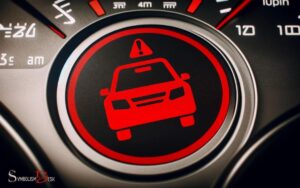Cruise Control Symbol in Car: Speedometer!
The cruise control symbol in a car typically resembles a speedometer with an arrow pointed at a specific speed or a gauge with a designated set arrow.
When this symbol is illuminated on your dashboard, it indicates that the cruise control system is activated and maintaining a constant speed as set by the driver.
Cruise control is a system that automatically controls the speed of a vehicle. The cruise control symbol is an indicator that shows whether the cruise control system is engaged.
Here’s how it works:
The symbol is usually found on the dashboard or on the steering wheel and lights up when the system is active.
Remember, cruise control is ideal for highway driving but should not be used in heavy traffic, on winding roads, or in adverse weather conditions.
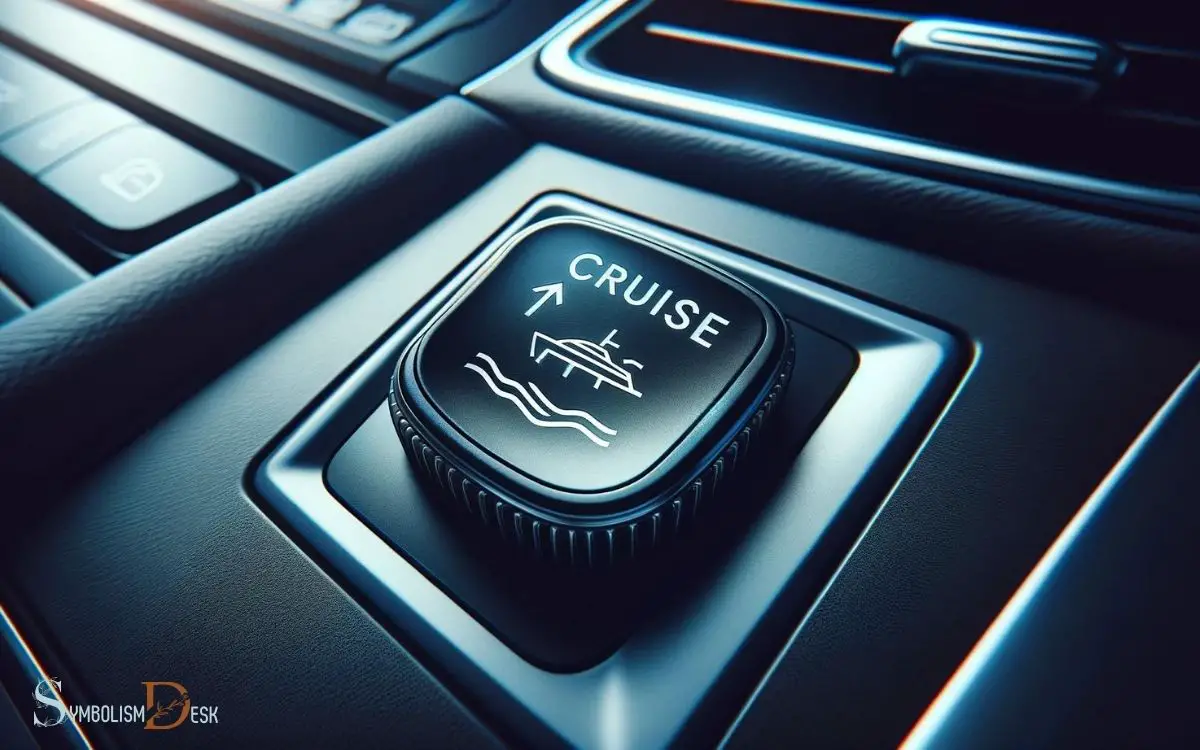
Key Takeaway
Understanding the Cruise Control Symbol
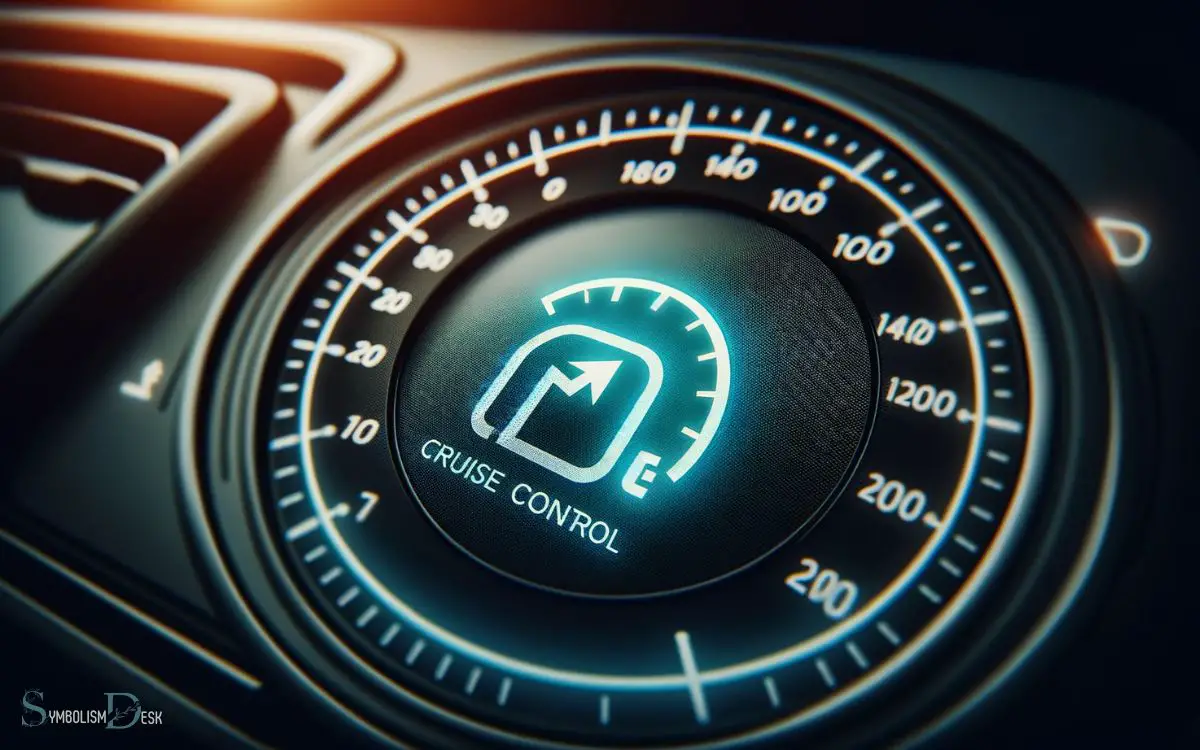
The cruise control symbol in a car provides drivers with a convenient way to maintain a constant speed on the road.
When activated, this system takes over the throttle of the vehicle, allowing the driver to set a desired speed.
The symbol typically appears as a speedometer with an arrow pointing at a certain speed, often accompanied by the word “cruise” or “cruise control.” Understanding this symbol is essential for drivers to utilize this feature effectively. This feature allows the vehicle to maintain a constant speed without the need for the driver to continuously press the accelerator, making long drives more comfortable and efficient. Familiarity with other dashboard icons, such as automatic car gear symbol meanings, can further enhance a driver’s understanding of the vehicle’s functionalities. Recognizing these symbols ensures safer and more intuitive operation while on the road.
Once the system is engaged, the driver can increase or decrease the set speed using the controls on the steering wheel or the dashboard.
To deactivate the cruise control, the driver can simply tap the brake or clutch, or press a designated cancel button.
Familiarizing oneself with this symbol and its functions can enhance driving comfort and fuel efficiency.
How to Activate Cruise Control
When should a driver engage the cruise control system in a car? Cruise control can be engaged when driving at a consistent speed for an extended period, such as on a highway or long, straight roads.
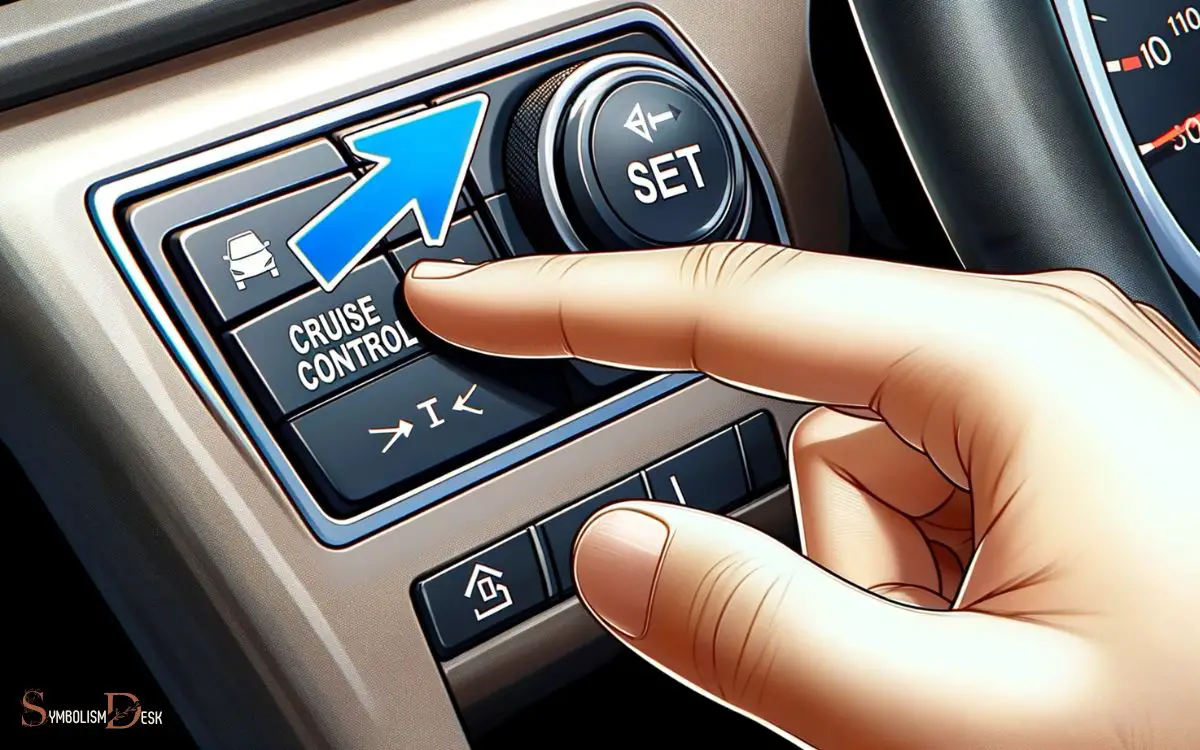
To activate cruise control, the driver should follow these general steps:
| Step | Activation Process |
|---|---|
| 1 | Accelerate to the desired speed. |
| 2 | Locate the cruise control button on the steering wheel or dashboard. |
| 3 | Press the button to turn on the cruise control system. |
Once activated, the vehicle will maintain the set speed without the driver needing to keep their foot on the accelerator. To adjust the speed, the driver can use the controls typically located on the steering wheel.
Adjusting Speed and Disengaging Cruise Control

To adjust the speed or disengage cruise control, drivers can simply press the brake pedal or turn off the system using the designated button.
When the brake pedal is pressed, the cruise control system is automatically disengaged, allowing the driver to regain manual control of the vehicle’s speed.
Additionally, most modern vehicles are equipped with a dedicated button on the steering wheel or dashboard to deactivate cruise control.
By pressing this button, the system is turned off, and the vehicle returns to manual control. It is important for drivers to be aware of these methods to quickly and effectively adjust or disengage cruise control when necessary, ensuring safe and convenient operation of the vehicle.
Benefits and Considerations of Using Cruise Control

While driving, drivers can experience the benefits of increased comfort and reduced fatigue by using cruise control on long stretches of highway. By setting a constant speed, drivers can avoid the need to constantly adjust the throttle, leading to less physical strain and fatigue.
This can be particularly beneficial during long drives, where maintaining a constant speed can lead to increased comfort.
Additionally, using cruise control can result in improved fuel efficiency, as it can help drivers maintain a consistent speed, leading to more stable fuel consumption.
However, it’s important for drivers to remain attentive and be prepared to disengage cruise control when necessary, such as in heavy traffic or inclement weather conditions.
Common Issues and Troubleshooting for Cruise Control
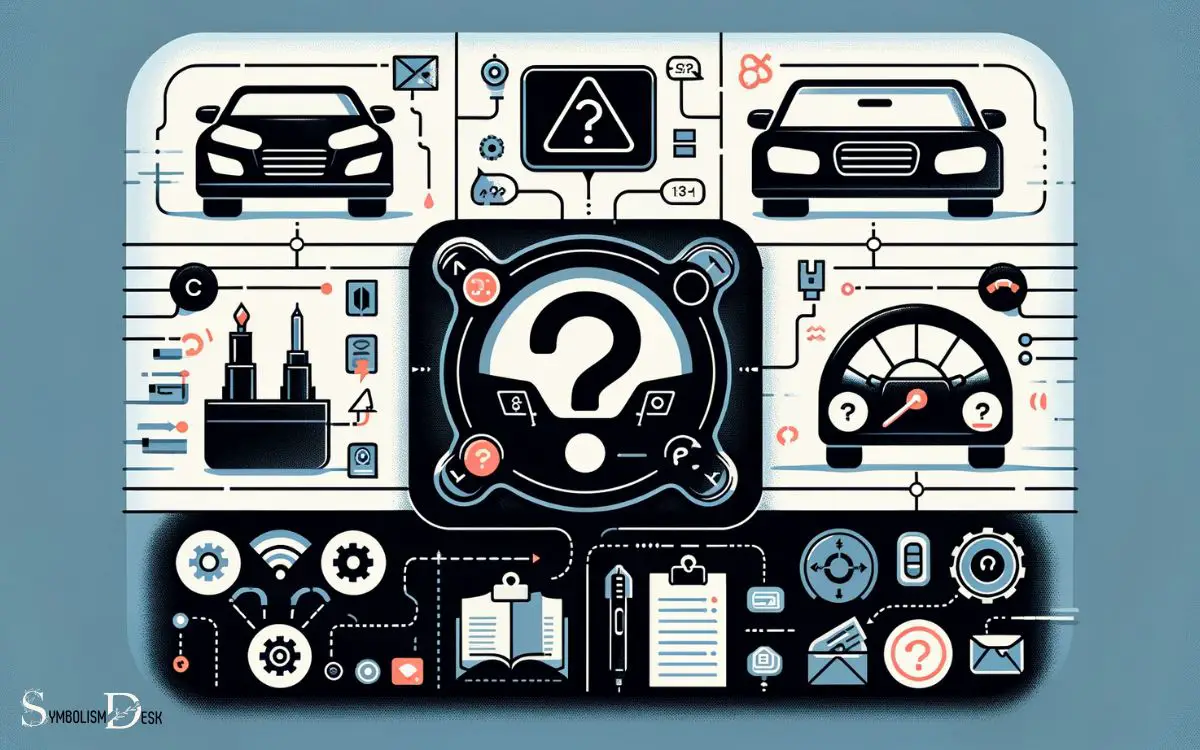
A common issue that drivers may encounter with cruise control is the occasional malfunctioning of the system, which can lead to unexpected disengagement.
This malfunction can be caused by various factors, such as a blown fuse, a faulty speed sensor, or a problem with the brake switch.
When the cruise control system fails to engage or disengages unexpectedly, it is essential to troubleshoot the potential causes.
Drivers can start by checking the cruise control fuse, inspecting the speed sensor for any damage, and ensuring that the brake switch is functioning properly.
If these initial checks do not resolve the issue, seeking assistance from a qualified mechanic or automotive technician is recommended to diagnose and address the problem effectively.
Regular maintenance and prompt troubleshooting can help ensure the proper functioning of the cruise control system.
Conclusion
The cruise control symbol in a car is a valuable tool for maintaining a consistent speed and reducing driver fatigue on long drives.
By activating and adjusting the cruise control, drivers can enjoy a smoother and more controlled driving experience. However, it is important to be aware of the benefits and considerations of using cruise control, as well as common issues and troubleshooting methods.
Overall, understanding and utilizing the cruise control symbol can greatly enhance the driving experience.



